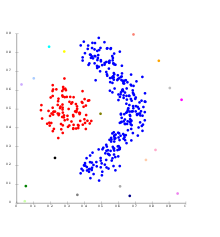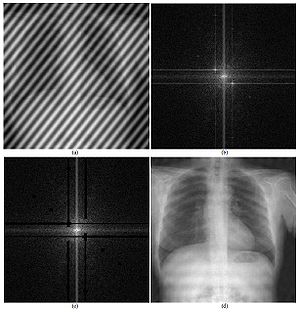Information engineering (field)
The neutrality of this article is disputed. (October 2018) |
Information engineering is the engineering discipline that deals with the generation, distribution, analysis, and use of information, data, and knowledge in systems.[1][2][3][4][5][better source needed] The field first became identifiable in the early 21st century.[citation needed]

The components of information engineering include more theoretical fields such as machine learning, artificial intelligence, control theory, signal processing, and information theory, and more applied fields such as computer vision, natural language processing, bioinformatics, medical image computing, cheminformatics, autonomous robotics, mobile robotics, and telecommunications.[1][2][5][6][7] Many of these originate from computer science, as well as other branches of engineering such as computer engineering, electrical engineering, and bioengineering.

The field of information engineering is based heavily on mathematics, particularly probability, statistics, calculus, linear algebra, optimization, differential equations, variational calculus, and complex analysis.
Information engineers often[citation needed] hold a degree in information engineering or a related area, and are often part of a professional body such as the Institution of Engineering and Technology or Institute of Measurement and Control.[8][9][10] They are employed in almost all industries due to the widespread use of information engineering.
History[]
The term information engineering used to[citation needed] refer to a software engineering methodology that is now more commonly known as information technology engineering[citation needed] or information engineering methodology. It began to gain its current meaning early on in the 21st century.[citation needed]
Elements[]
Machine learning and statistics[]
Machine learning is the field that involves the use of statistical and probabilistic methods to let computers "learn" from data without being explicitly programmed.[11] Data science involves the application of machine learning to extract knowledge from data.
Subfields of machine learning include deep learning, supervised learning, unsupervised learning, reinforcement learning, semi-supervised learning, and active learning.
Causal inference is another related component of information engineering.
Control theory[]
Control theory refers to the control of (continuous) dynamical systems, with the aim being to avoid delays, overshoots, or instability.[12] Information engineers tend to focus more on control theory rather than the physical design of control systems and circuits (which tends to fall under electrical engineering).
Subfields of control theory include classical control, optimal control, and nonlinear control.
Signal processing[]
Signal processing refers to the generation, analysis and use of signals, which could take many forms such as image, sound, electrical, or biological.[13]

Information theory[]
Information theory studies the analysis, transmission, and storage of information. Major subfields of information theory include coding and data compression.[14]
Computer vision[]
Computer vision is the field that deals with getting computers to understand image and video data at a high level.[15]
Natural language processing[]
Natural language processing deals with getting computers to understand human (natural) languages at a high level. This usually means text, but also often includes speech processing and recognition.[16]
Bioinformatics[]
Bioinformatics is the field that deals with the analysis, processing, and use of biological data.[17] This usually means topics such as genomics and proteomics, and sometimes also includes medical image computing.
Cheminformatics[]
Cheminformatics is the field that deals with the analysis, processing, and use of chemical data.[18]
Robotics[]
Robotics in information engineering focuses mainly on the algorithms and computer programs used to control robots. As such, information engineering tends to focus more on autonomous, mobile, or probabilistic robots.[19][20][21] Major subfields studied by information engineers include control, perception, SLAM, and motion planning.[19][20]
Tools[]
In the past some areas in information engineering such as signal processing used analog electronics, but nowadays most information engineering is done with digital computers. Many tasks in information engineering can be parallelized, and so nowadays information engineering is carried out using CPUs, GPUs, and AI accelerators.[22][23] There has also been interest in using quantum computers for some subfields of information engineering such as machine learning and .[24][25][26]
See also[]
- Aerospace engineering
- Chemical engineering
- Civil engineering
- Internet of things
- List of engineering branches
- Mechanical engineering
- Statistics
References[]
- ^ Jump up to: a b "2009 lecture | Past Lectures | BCS/IET Turing lecture | Events | BCS – The Chartered Institute for IT". www.bcs.org. Retrieved 11 October 2018.
- ^ Jump up to: a b Brady, Michael (2009). "Information Engineering & its future". Institution of Engineering and Technology, Turing Lecture. Retrieved 4 October 2018.
- ^ Roberts, Stephen. "Introduction to Information Engineering" (PDF). Oxford Information Engineering. Retrieved 4 October 2018.
- ^ "Department of Information Engineering, CUHK". www.ie.cuhk.edu.hk. Retrieved 3 October 2018.
- ^ Jump up to: a b "Information Engineering | Department of Engineering". www.eng.cam.ac.uk. Retrieved 3 October 2018.
- ^ "Information Engineering Main/Home Page". www.robots.ox.ac.uk. Retrieved 3 October 2018.
- ^ "Information Engineering". warwick.ac.uk. Retrieved 3 October 2018.
- ^ "Academic Partners and Affiliates 2017/2018 – The IET". www.theiet.org. Retrieved 3 October 2018.
- ^ "Electronic and Information Engineering ��� Imperial College London". Times Higher Education (THE). Retrieved 3 October 2018.
- ^ "Accreditation of the MEng | CUED undergraduate teaching". teaching.eng.cam.ac.uk. Retrieved 3 October 2018.
- ^ Bishop, Christopher (2007). Pattern Recognition and Machine Learning. New York: Springer-Verlag New York Inc. ISBN 978-0387310732.
- ^ Nise, Norman (2015). Control Systems Engineering. Wiley. ISBN 978-1118170519.
- ^ Lyons, Richard (2010). Understanding Digital Signal Processing. Prentice Hall. ISBN 978-0137027415.
- ^ Cover, Thomas (2006). Elements of Information Theory. Wiley-Interscience. ISBN 978-0471241959.
- ^ Davies, Emlyn (2017). Computer Vision: Principles, Algorithms, Applications, Learning. Academic Press. ISBN 978-0128092842.
- ^ Jurafsky, Daniel (2008). Speech and Language Processing. Prentice Hall. ISBN 978-0131873216.
- ^ Lesk, Arthur (2014). Introduction to Bioinformatics. Oxford University Press. ISBN 978-0199651566.
- ^ Leach, Andrew (2007). An Introduction to Chemoinformatics. Springer. ISBN 978-1402062902.
- ^ Jump up to: a b Siegwart, Roland (2011). Introduction to Autonomous Mobile Robots. MIT Press. ISBN 978-0262015356.
- ^ Jump up to: a b Kelly, Alonzo (2013). Mobile Robotics. Cambridge University Press. ISBN 978-1107031159.
- ^ Thrun, Sebastian (2005). Probabilistic Robotics. MIT Press. ISBN 978-0262201629.
- ^ Barker, Colin. "How the GPU became the heart of AI and machine learning | ZDNet". ZDNet. Retrieved 3 October 2018.
- ^ Kobielus, James. "Powering artificial intelligence: The explosion of new AI hardware accelerators". InfoWorld. Retrieved 3 October 2018.
- ^ Wittek, Peter (2014). Quantum Machine Learning. Academic Press. ISBN 978-0128100400.
- ^ Schuld, Maria (2018). Supervised Learning with Quantum Computers. Springer. ISBN 978-3319964232.
- ^ Tandon, Prateek (2017). Quantum Robotics. Morgan & Claypool Publishers. ISBN 978-1627059138.
- Engineering disciplines
- Information
